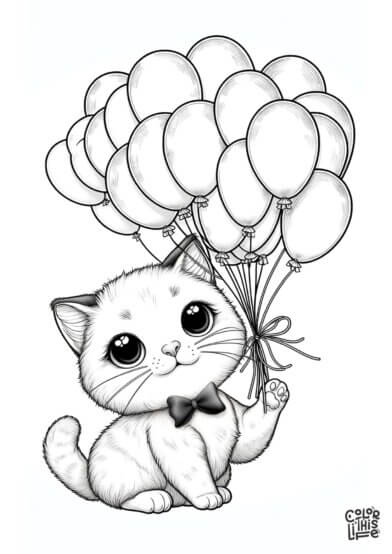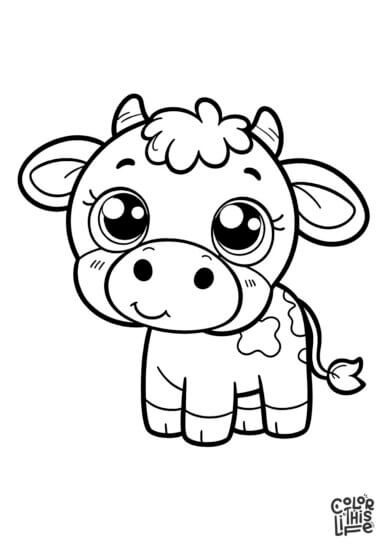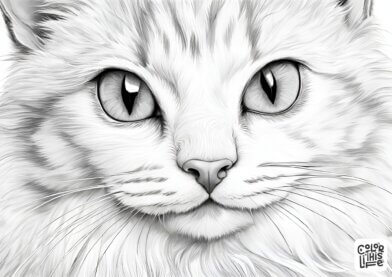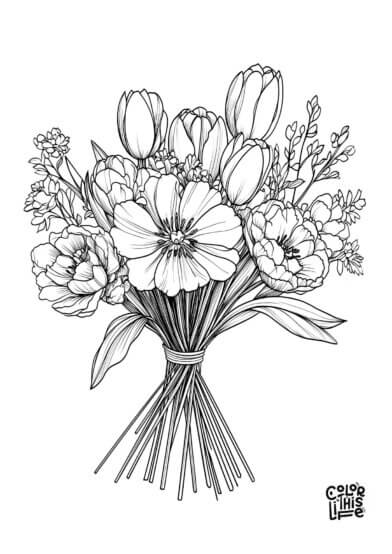Coloring Tips
Coloring Tips: How to Get Better at Coloring
Coloring might seem simple, but one of the great things about this activity is that you can approach it at different levels and make it as easy or complicated as you like.
Whether you’re just starting out or you already have some experience, these coloring tips will help take your artwork to the next level and add enough variety to keep it enjoyable.
1. Start at the right level
For coloring to be fun, you want it to be slightly challenging but not so difficult (or boring) that you want to give up.
If your coloring skills are a little rusty, you may want to start with a simple coloring page design. On the other hand, if you love spending hours on minute details, pick a more intricate design.
It doesn’t matter if it takes you 30 minutes or several hours to finish your work; you’ll get a great sense of accomplishment from completing it.
2. Let yourself make mistakes
One of the benefits of coloring is that it takes you away from a mindset where everything has to be perfect.
If you slip outside the lines or a picture doesn’t turn out how you expected, it’s ok! You can still enjoy the process, learn from your experience, and try again.
This is one of the great things about coloring pages – you can print out several copies of the same design and approach it in different ways until you get a result you’re happy with.
3. Experiment with different materials
Colored pencils and markers are most people’s go-to coloring materials. Markers produce strong, block colors whereas pencils have more options for shading, layering, and texture.
Other materials to experiment with include:
- Watercolor pencils, markers, or paint (requires watercolor paper)
- Acrylic paint
- Wax crayons
- Gel pens (including neon, metallic, glitter, etc.)
- Lead pencils (monochrome)
- Brush pens
Each of these has its own pros and cons. For example, wax crayons are good for covering a large area but not for adding small details. Watercolor materials can create a beautiful effect but require specialist paper and a bit of practice.
The paper you use can also make a difference to how your coloring materials appear and the range of effects you can achieve with them.
Basic printer paper holds crayons and pencils quite well, but you’ll need thicker paper for markers, pens, and paints to work well. Experiment with textured papers for more depth and different effects.
4. Try different techniques
Here are some more advanced coloring techniques that you can use to add detail and texture to your pictures:
Layering
Layering involves beginning with a light layer of color and then building additional layers to deepen the color.
This is most often done with colored pencils, but can be achieved with water-based markers as long as the paper is thick enough.
Practicing layering with colored pencils will help you understand how to control pressure and achieve different shades.
Pressure shading
The harder you press with a pencil, the deeper the color will be. Pressure shading simply means varying your pressure according to the shade you want to achieve.
It’s best to start with lighter areas and then move on to darker. You can always add another layer if needed, but you can’t lighten what you have already done.
Blending
Blending involves combining two or more colors to make a new one.
When using colored pencils or crayons, you do this by layering one color on top of another (begin with the lighter color, as it’s usually more effective to layer dark over light).
You can also blend colors when using crayons, watercolor pencils, paints, and some water-based pens.
It may take some trial and error and practice to understand how different colors in different materials blend together, but you can always test it on a separate piece of paper before applying it to your main picture.
Dot coloring
This technique involves coloring by using only dots. It works best with markers and allows you to combine colors to create new shades when your choices are limited.
Sparse dots create a lighter effect whereas densely packed dots look darker when viewed from a distance.
You can fill areas with a single color or try overlapping colors for a blended effect.
Coloring tips for kids
Coloring is a great activity for kids; it helps them learn and develop in multiple ways. Here are some ways to make it fun and productive:
Use age-appropriate materials
We all know how frustrating it can be for kids (and parents) if their crayons keep snapping, leads keep breaking, and pen nibs keep disappearing. Until they’re old enough to learn how to use the correct pressure and avoid these problems, switch to materials that are more appropriate for their age.
Chunky crayons are great for very small hands – and harder to break than thin ones.
Twistable crayons are also good because they don’t need to be sharpened and they offer more precision than chunky crayons. However, they may snap if dropped, making them harder to use.
When your kids are ready to use markers, start with chunky ones that won’t easily be damaged. Getting washable markers that don’t dry out quickly is also a good idea.
As kids gain more control over their motor skills and understand how to care for their coloring materials, you can introduce coloring pencils and fine markers to allow them to create more appealing designs.
Print coloring pages they will love
Kids will stay engaged with coloring for longer if they’re invested in the picture they are making.
Print some coloring pages featuring their favorite animal, toy, or cartoon character – and make multiple copies of each one in case they want to start again or their friends decide to join in!
Start applying color theory
Your kids may have learned that red + yellow = orange, but do they know they can put this into practice while coloring?
Using crayons or colored pencils, show them the effect of shading one color over another and let them play around with different combinations.
After working through these coloring tips, not only will your artwork be more impressive; you’ll also have more fun using your creativity in different ways!






